How Craighill Got 45M Video Views In Five Months
The success of the design company tells us a lot about the future of social media.
I’ve watched every single one of Craighill’s videos. Multiple times. Since January the design and manufacturing company has only shared 25 posts—yet in those five months their sharp short-form videos have garnered over 45M views and led to 163K new followers. And that’s just on Instagram.
Craighill’s videos go deep on common design problems and how they think about the solutions to them. Their products—like key rings, card cases, wine openers, rulers, and more—are usually at the center of them. For example, this Reel is about their money clip. But it’s also about their quest to figure out how to get a clip to return to its original position once you bend it past its elastic limit—a problem we can all relate to once we see them demonstrate it on a pen clip. The video has 10.9M views.
The brand’s success signals a lot to me about the future of social media. That your social team greatly benefits from a full-time video maker. That you don’t need to participate in trends to get views. That audiences are smarter than you think. That entertainment leads to sales. That a platform strategy can simply be doing one format really well.
For today’s newsletter I am talking to Craighill’s co-founder and Head of Brand Zach Fried. We chat about the YouTube channel he watched to learn about social media, why it’s important to like the videos you’re making (“The question we ask ourselves constantly is: what videos do we not see on the internet that we wish existed?”), and how organic posts play into their paid social strategy. Plus he gave me a peek into the brand’s post analytics. It’s one of my favorite conversations I’ve had for this newsletter.
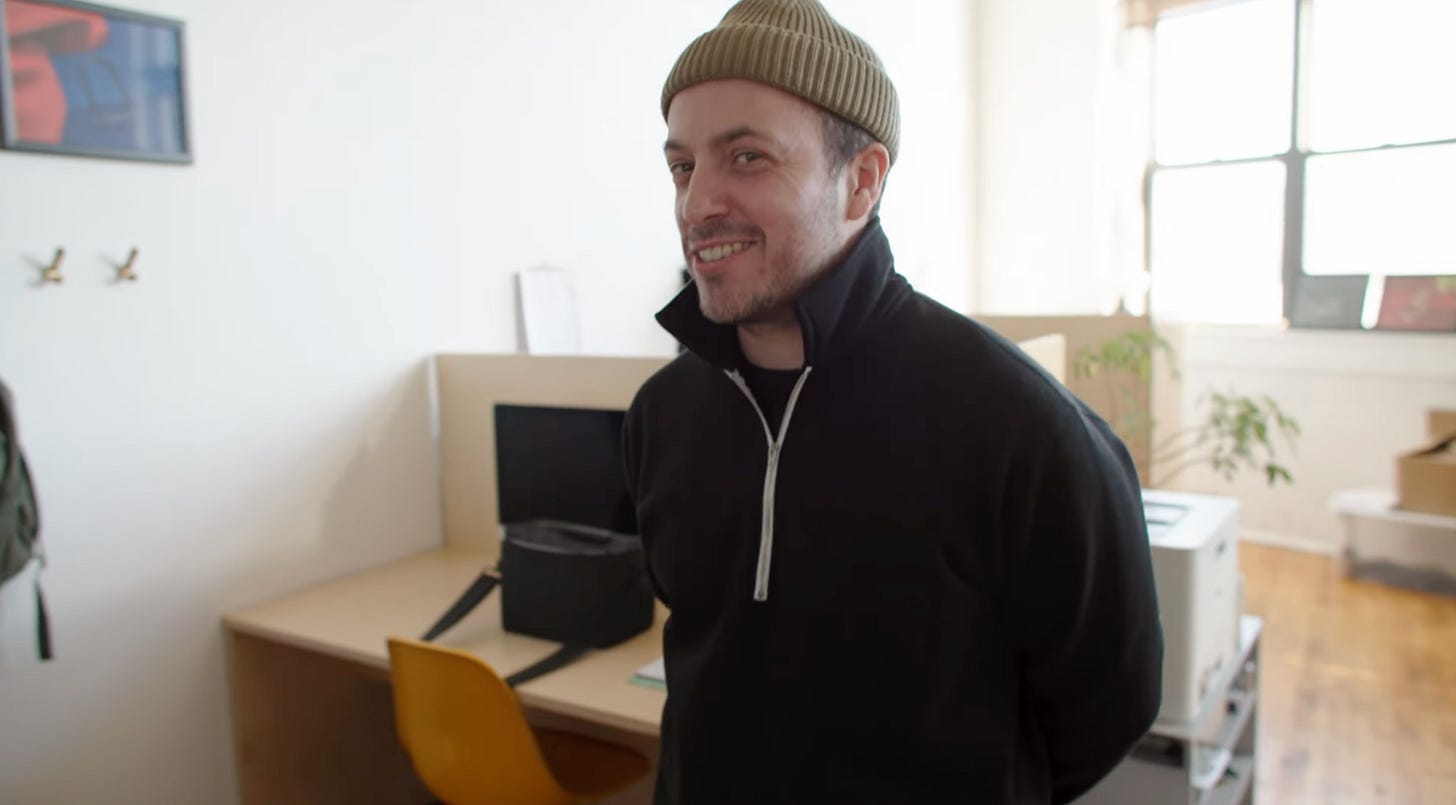
Rachel Karten: If you had to distill down Craighill's social media philosophy, what would it be?
Zach Fried: Make videos that we love about things that we find interesting.
RK: Smart. You and I have talked about how the brand really started "taking social seriously" about a year ago. Was there a specific moment or realization that motivated you to make that shift?
ZF: There were a couple of realizations.
First, to grow a brand, you must make people aware of your existence (pretty obvious).
Second, most options to increase awareness require spending lots of money, except for organic social media. If you make content people care about, you can reach millions of people practically for free. The only expense is the cost of making the content. It’s a crazy, unprecedented distribution system. The big question is whether or not you’re able to produce content that people find engaging. Once this all fully sunk in, we decided it made sense to “take social seriously.” We had to figure it out.
RK: What were some of the first changes you made when you decided to take social more seriously?
ZF: The first change was deciding to stop dismissing social as being an afterthought, and to stop avoiding it because it made us uncomfortable (getting in front of a camera is an unnatural feeling for most people). We treated it like a legitimate field of study and tried to understand how it works strategically and mechanically. I listened to a lot of Colin and Samir and got pretty deep into understanding the journey successful creators had been on, starting from zero and then building up an entire business around creating content. Before going into this, no one on our team was particularly plugged into this ecosystem. We didn’t watch a lot of YouTube, we didn’t have TikTok, so we were starting from scratch in a certain sense, trying to understand as much as possible about the foundational elements of it all.
We also knew that we had to take what we had learned and translate it into content that we could own. To “find our voice,” if you will. This took a while, but it happened by diving in, making videos, and figuring it out. We knew we had to invest resources, and we probably wouldn’t be very good at first. We were prepared to suck. That’s a real deterrent with this type of project, knowing that the most likely outcome in the beginning is to put in money and effort and be bad at something publicly. It feels much better to be bad at something in private for free. But we believed it would ultimately work, that it was an investment that would require some patience to figure out.
We started working with a freelance videographer at first, which was great in many ways. But it was hard to build real momentum and learn because he wasn’t here every day. After about six months, we brought on a full-time video producer, Henry Schaefer, which is when things began to click. But we had to go through those initial missteps to know who we were looking for. We only knew he was the person we needed because we had committed to the concept and tried some other approaches first.
RK: What does the team look like that concepts, films, and edits Craighill's videos?
ZF: It’s all led by Henry. He works on concepts with Hunter Craighill (Co-Founder/Design Director) and Kevin Chee (Design Manager), who are featured in most of the videos. They will kick around ideas about some interesting design detail or mechanism, and Henry usually zeroes in on something he finds particularly interesting. From there, he films an interview for 5 to 10 minutes to wind up with 60 to 90 seconds of dialogue. He then shoots product footage, and Hunter and Kevin will often help make 3D-printed objects that help communicate an idea or concept. Henry then assembles it all on a timeline and starts to cut it together. He edits to pieces of music I’ve made, which allows us to tie everything together with a consistent musical vibe. Once he has an edit in place, there will often be additional filming, or picking up a line of dialogue that brings it all together. It’s a tight team, and Henry is the driving force. Ideas are king, and the only quota is two videos a week.
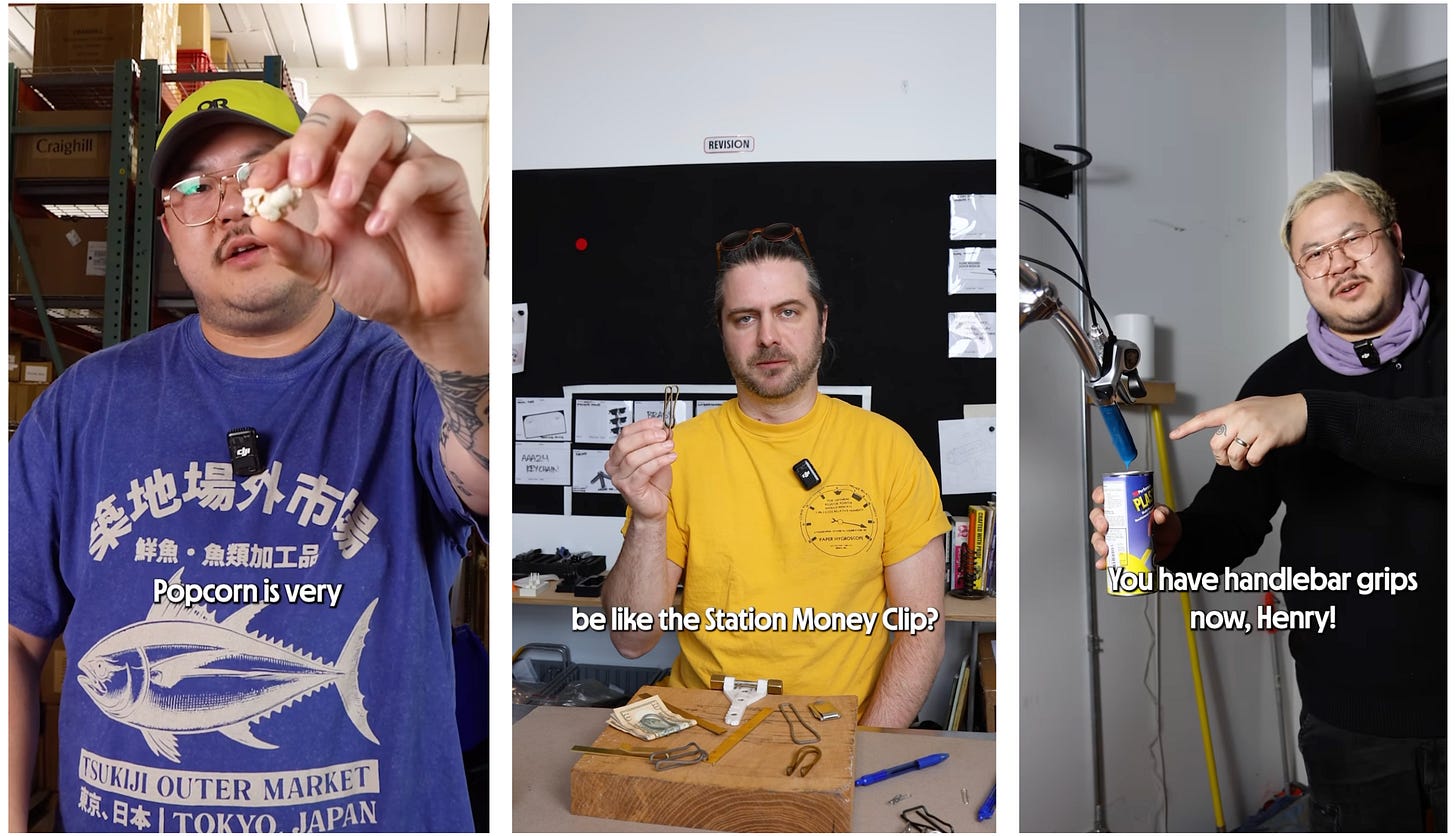
RK: Tactical question but what camera do you shoot on? Are you shooting vertical or just editing videos down to vertical?
ZF: Almost everything is shot on a Canon R8, with occasional help from the iPhone. We shoot everything vertically now since we’re only really active with short-form vertical videos.
RK: In a sea of trends and copycat formats, your videos stand out. Why do you think they are resonating on platforms like TikTok and Instagram?
ZF: It starts with the ideas. The subject matter is interesting, and Hunter, Kevin, and Henry are good at describing relatively complex concepts in an approachable way that is connected with everyday life. I think it comes across that they take design seriously, but they don’t take themselves too seriously—they’re pretty low-key and funny, so it’s relatable.
Henry has an excellent eye for framing and visual details, and he’s very good at communicating with video, ensuring that the concepts are clearly understood. He’s also great at editing, and the pacing of the videos feels snappy and musical without being overwhelming. For whatever reason, right now, that particular combination of factors is resonating.
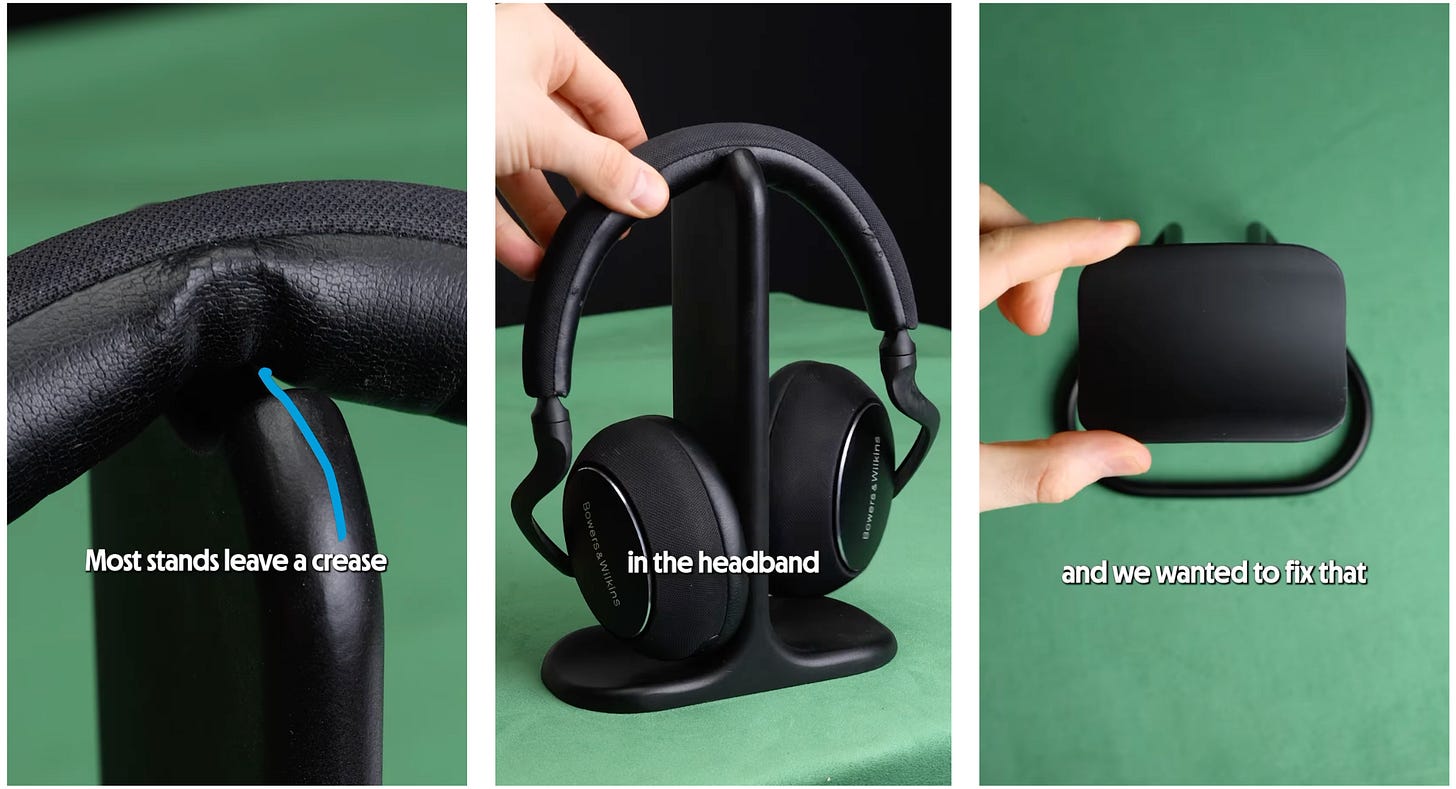
RK: You mentioned that you're a fan of Colin and Samir's videos. While they are traditionally thought of as a creator resource, it makes a lot of sense that brands would get a lot out of their content. Are there any video tips you picked up from them?
ZF: I love Colin and Samir. If they come upon this, thank you for doing what you do. Their podcast has been very grounding, hearing from successful creators about their journeys. So many creators they talk to have shared a similar experience of not finding success immediately. Sometimes it takes many years. And the patience to keep going comes from creating videos you genuinely enjoy making. If you are doing something that you like doing, whether or not tons of people will see it, it’s a lot easier to remain patient and continue refining. That was the big reason we chose not to chase trends. We knew it would be draining for us to try and participate in specific zeitgeist waves over and over again, and that we would probably give up if it didn’t work. So we decided to make something we really like ourselves, that satisfies our specific interests.
RK: I think that liking the videos you’re making comes through in the content itself. You feel it as a viewer. Related, when I talk to founders or social managers, they sometimes say that they need to compromise brand guidelines or beliefs to participate on social. What I love about Craighill's social is that it feels as intentional as the products themselves, but still social-first and at home on the internet. What advice would you give other brands that might be struggling with this?
ZF: Hey thank you! That’s really nice to hear. I guess the advice we’d share is that you truly don’t need to compromise, and you’ll ultimately be most successful if you don’t. That doesn’t mean ignoring the rules of the game—the first three seconds need to be engaging, you should introduce some kind of question that’s then answered in the video, sounds and music are important. So there is 100% value in learning about the structure of other successful videos from other creators. But finding inspiration and examples on the internet only goes so far. You have to find your unique perspective and share that.
Ultimately, the content that is really going to work for you on organic social doesn't exist yet. That's why you have to create it. The question we ask ourselves constantly is: what videos do we not see on the internet that we wish existed? And then when it does work, you’ll be putting something into the world that you genuinely stand behind, there won’t be that kind of cringey discomfort that’s so common when we share things that don’t feel quite right.
RK: The majority of your posts are videos. What role do photos play in your strategy?
ZF: Our video strategy is grounded in telling stories and building community. The medium can convey so much information and emotion, and create more of a human connection than still images.
That was the core idea in our effort to “get better at social media.” Rather than hiring a generalist creative to do photos and videos, we prioritized hiring a video maker. Part of the thinking is that finding someone who is great at making videos is harder, so if we could do the harder thing, it would have an outsized impact.
The move to a video-only feed wasn’t the plan initially. But things with video began working well, so we decided to go where the momentum led us. We’ve had some internal debate about whether it’s essential to post still images of our products on our feed, but keep concluding that curious people who want to see pictures of our products can still easily make their way to our website and see lots of great photos.
Ultimately, we do want to incorporate static images, probably as carousels. But now we’re thinking through how carousels can tell stories as effectively as our videos. Posting pretty photos on Instagram doesn’t work that well anymore, there has to be more to it.
RK: How do your organic videos play into your paid social strategy?
ZF: Anything that does well organically and prominently features one of our products, we’ll run it as an ad. The built-up social proof on the organic post comes along with the ad, and so it winds up feeling very native and natural. Prior to the success of the organic content, we’d never had much luck with ads. Now they’re providing a solid top-of-funnel foundation for our paid media efforts.
RK: What sort of direct impact has your social success had on sales?
ZF: It’s been tangible, this year is going very well. It’s also been an amazing new window into our community and what they find interesting. We’re teasing little things that will wind up in products that are currently in the pipeline, which is fun. But we’re also thinking more actively now about what kind of products might make for a great story in this format. It’s not that we’ll allow the videos to dictate what we make going forward, but it’s useful to have this framework for thinking about what to prioritize and what we believe could connect on social.
RK: What's next for Craighill on social? I'd watch longform YouTube videos from you...
ZF: We’re figuring this out now. Longform YouTube is the goal, but it’s a heavy lift to do it how we’d like to, so we just need to ensure the timing is right and we have the resources to execute. We’re also exploring Substack, a podcast, maybe Patreon. Whatever it is, we’re going into it ready to be bad at it initially and for no one to pay attention, so we have to make sure it’s something we’re happy doing creatively, even if it doesn’t work.
You can support free interviews like this one with a paid Link in Bio subscription!
It’s likely an educational expense at your company—here’s a template for you to use when asking your manager.
Here’s how Red Fabbri, YouTube Social team lead, describes the newsletter, “Rachel is ‘one of us’; a social media manager forged in the fires, turned astute observer of the trade and the tools. She has incredible interviews with those doing the work at the best brands in the business, and finds some of the best examples of good (and bad) work you need for competitive analysis.”



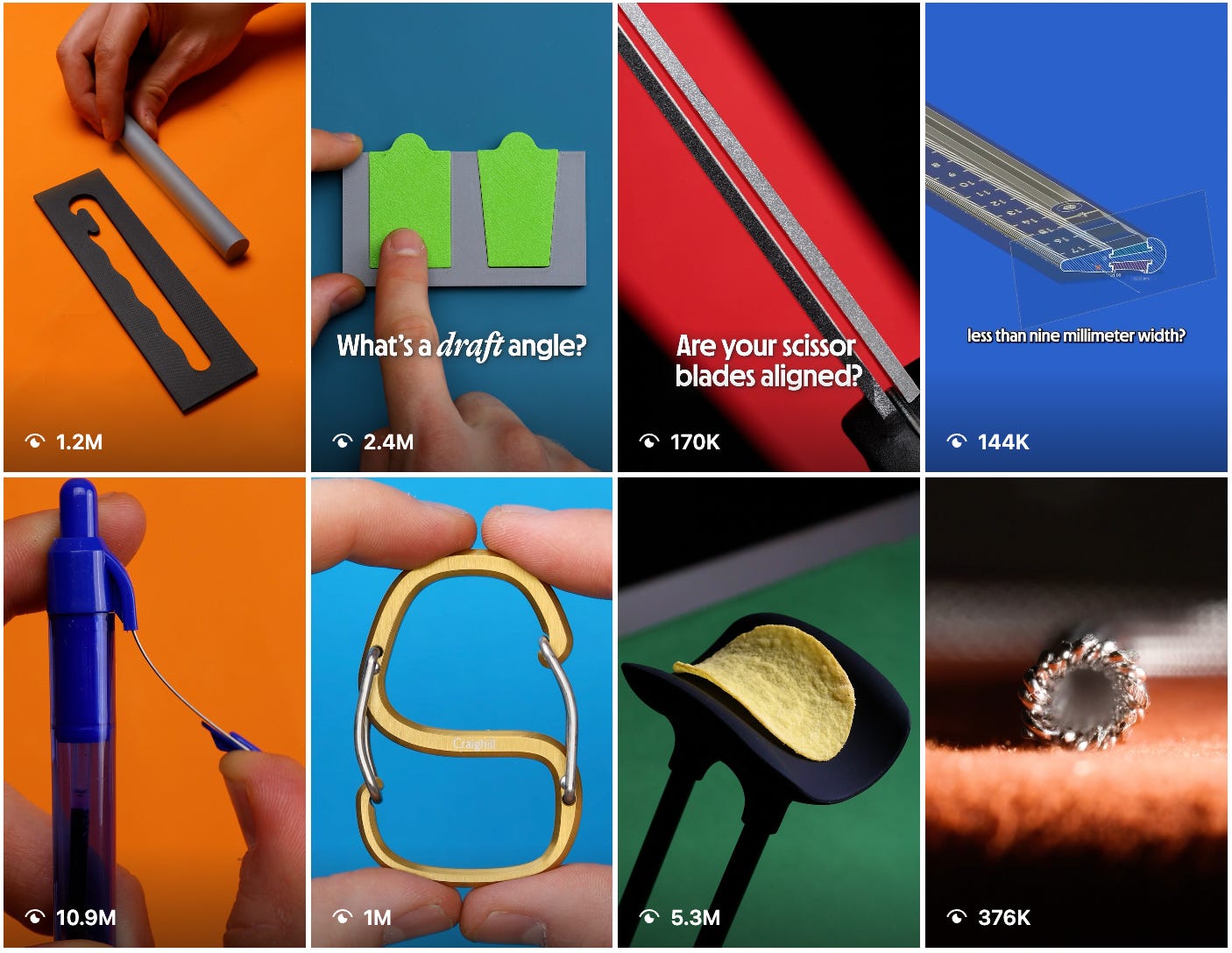

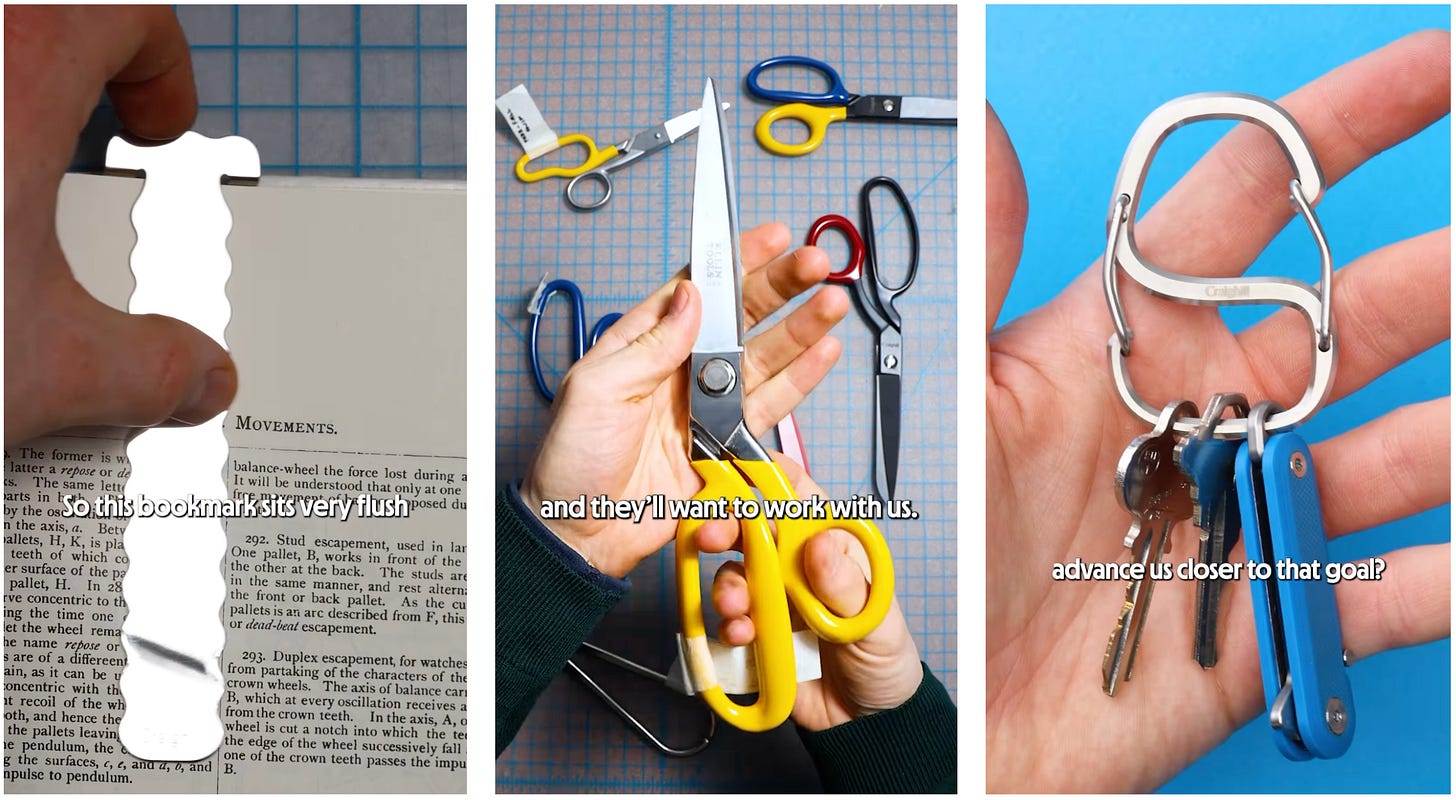
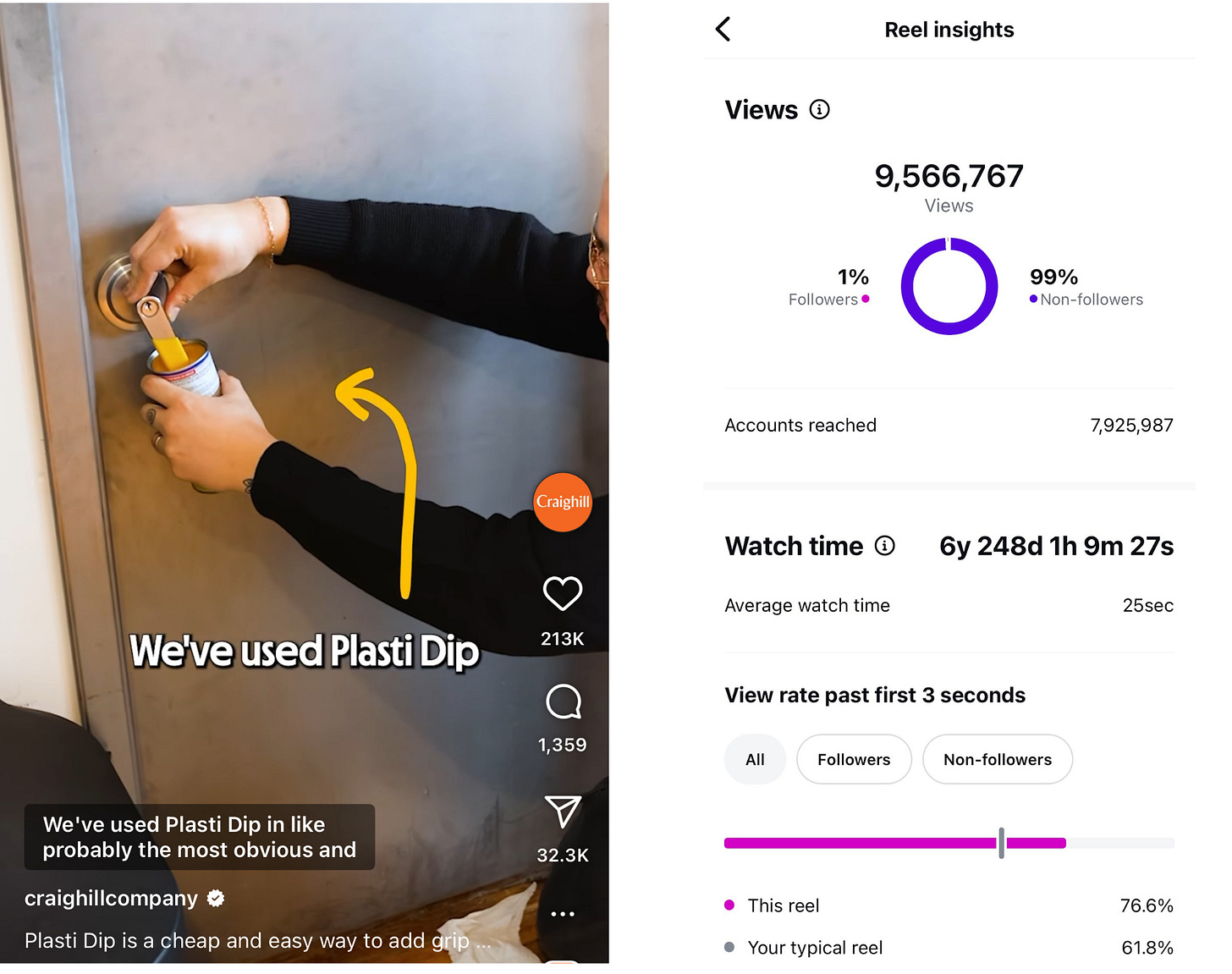
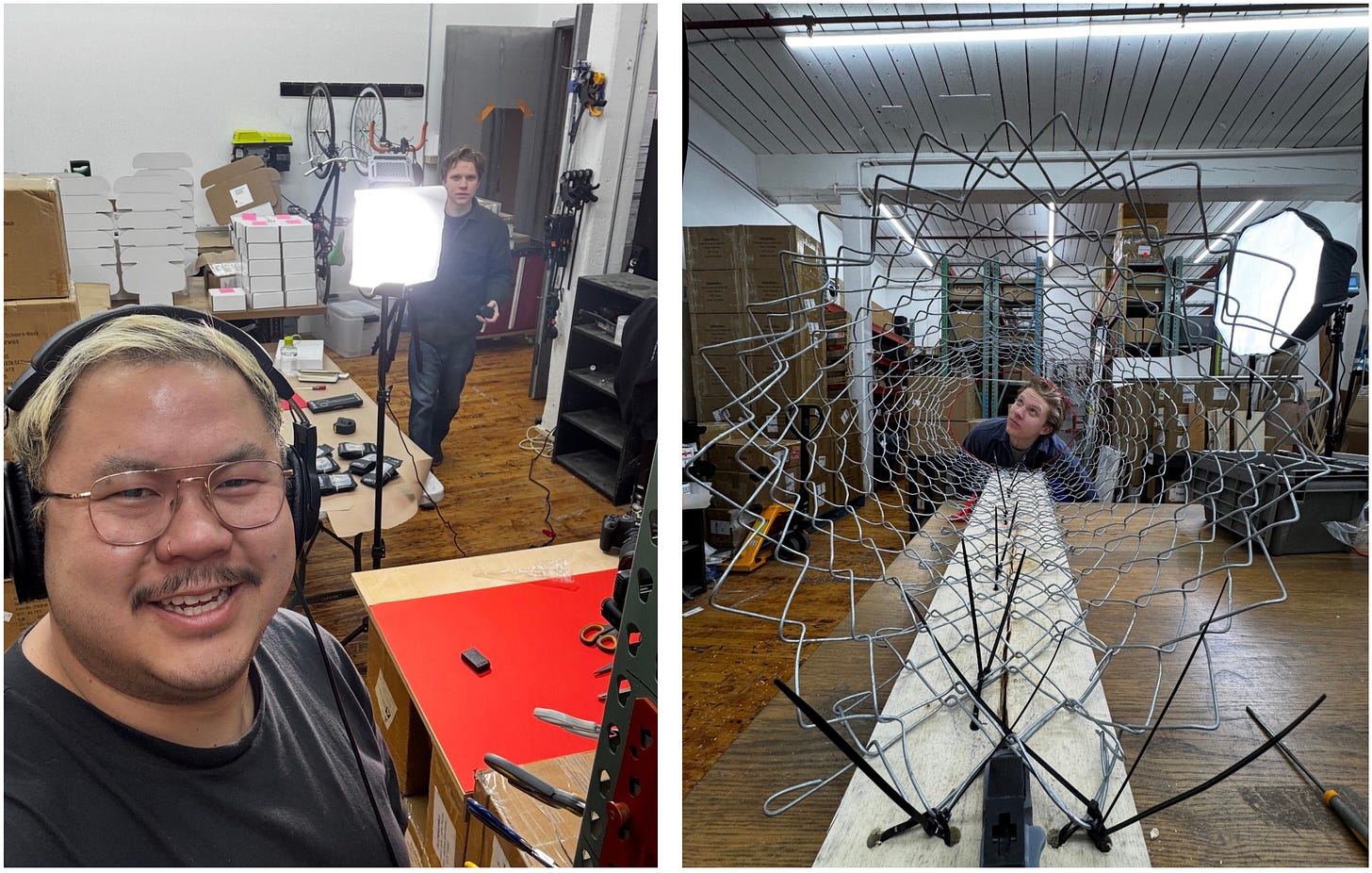

Genuinely refreshing to see a brand find success on social — and for their business — by making content for adults without needing to incorporate visual tropes (exaggerated YouTube thumbnails) or trending audio + associated bits.
Their videos definitely appeal to me as a creative and a designer. I always say design is problem solving and their videos hit the spot. I do want to add another thing that got me to follow them even though I've been a fan of their products way before is the accessibility. As a deaf person, I need visual version of sounds. Their captions are beautifully done in a manner that it fits their brand, have good pacing, and does not obstruct anything in the videos.